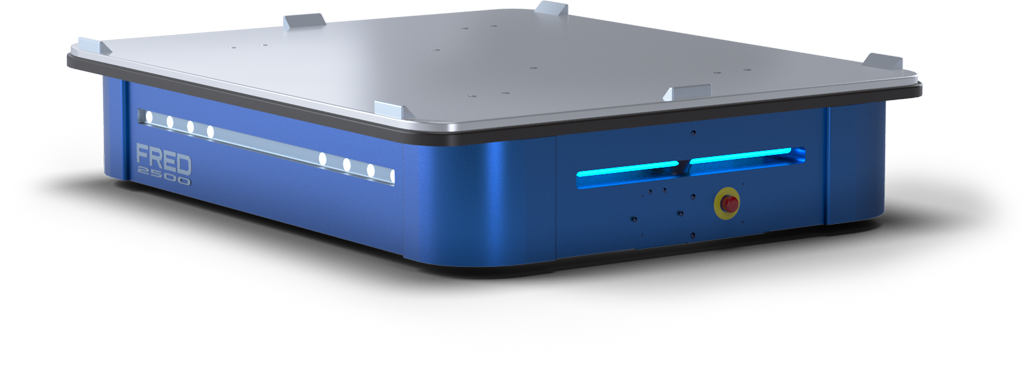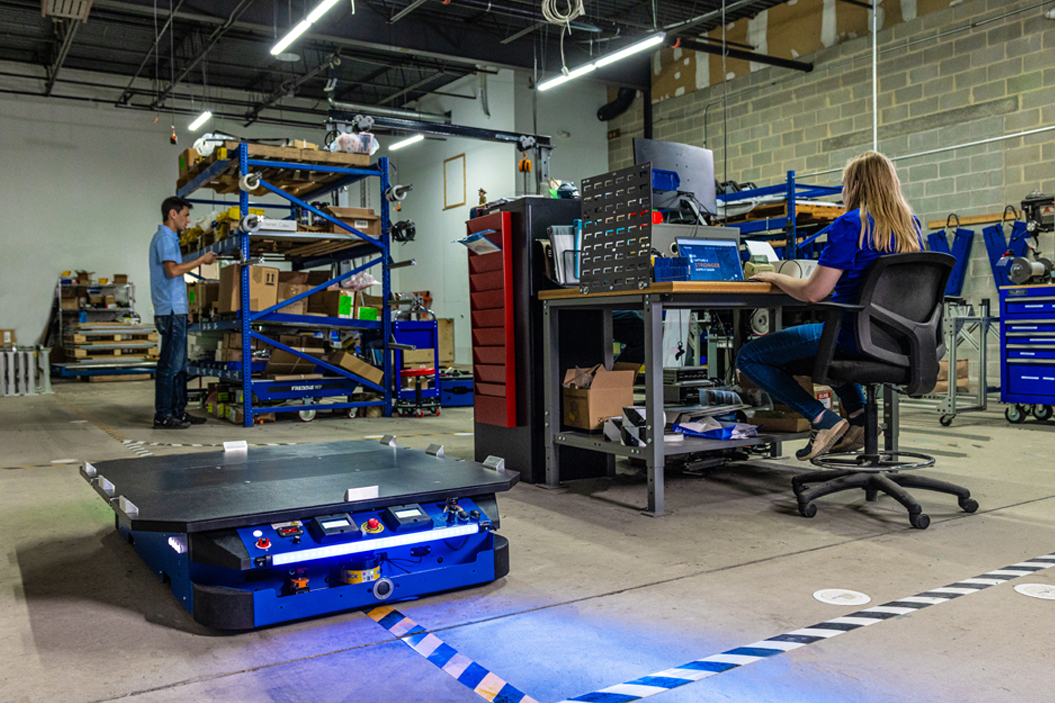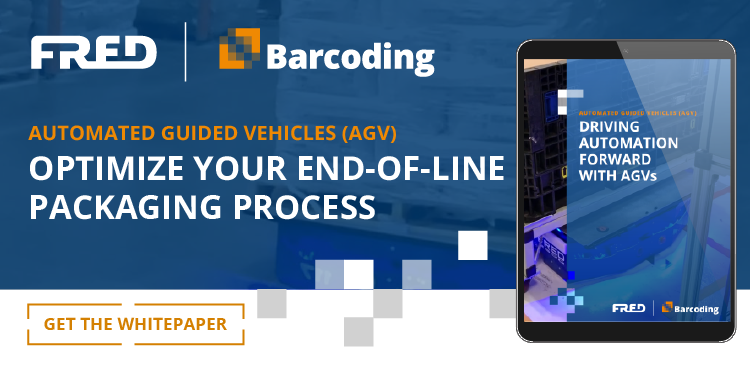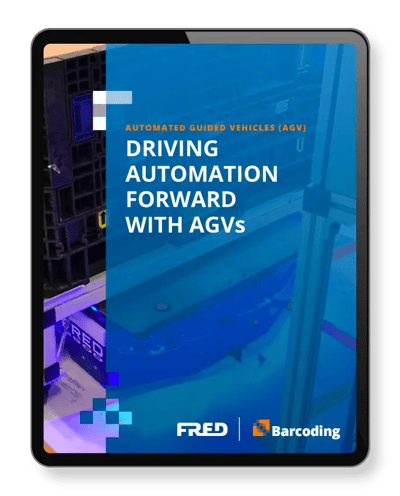Automation in material handling and logistics has seen some incredible advancements over the past few years, with automated guided vehicles (AGVs) and autonomous mobile robots (AMRs) improving material movement and enabling efficient workflows while reducing physical demands on workers.
AGVs in particular bring a streamlined, no-fuss approach to optimizing material flows in manufacturing and warehousing. They’re made to carry and tow the heavy loads—all shift, every shift—so products and materials get where you need them, while your people can focus on adding human value instead of the time-consuming grunt work of moving pallets.
But just like AGVs and AMRs aren’t the same, different AGVs use a variety of technologies to move materials efficiently through a facility while keeping human workers safe. Differences in navigational technologies can add up to differences in costs, setup and implementation timelines, user training needs, and even AGV versatility and ease of use.
Choosing the right AGV guidance for your use case is crucial for maximizing efficiency, ensuring a safe workplace, and integrating automation into your workflows.
AGVs and AMRs: Two Ways to Automate Material Handling
AMRs and AGVs are two types of driverless mobile robots used in industrial environments like warehouses and manufacturing plants. Both are commonly used to transport raw materials, works-in-progress, finished goods, and palletized loads throughout facilities.
AMRs utilize sophisticated mapping software, cameras, and sensors for guidance, allowing them to navigate a work area freely. AGVs on the other hand, follow a predetermined path, so AGVs tend to require minimal on-board “brains,” and often utilize simpler navigational tech to get the job done.
So while an AMR might be programmed to follow more complicated instructions or queue multiple tasks within a facility, an AGV is more of a workhorse, perfectly satisfied to walk steady laps moving heavy loads from one point to another.
Typical AGV use cases include:
- Moving raw materials from receiving, warehousing, or staging to production lines
- Transporting parts, components, or works-in-progress from one station or line to another
- Handling inbound or outbound loads between receiving, warehousing, and shipping
- Collaborating with warehouse pickers to transport picked orders to packaging and shipping workstations
AGVs can be configured to perform specialized tasks—for example, stretch-wrapping pallets for shipping without the need for a human operator. But plenty of operations have lots to gain by automating even the simplest tasks like handling dunnage and moving pallets and saving the more interesting, value-added tasks for human workers. It’s just one simple way AGVs can help solve for the current labor shortage, free up floor space, and keep material moving at a steady, predictable pace.
So let’s take a closer look at the technologies different AGVs use to move, with a focus on these key considerations:
- Safety—tightly controlled AGV movements protect workers who share the space
- Obstacle avoidance AGVs are predictable, but people aren’t
- Path flexibility—frequent route changes demand quick and easy revisions
- Tech expertise—just-right technology isn’t necessarily the most complex
- Infrastructure requirements—lasers or inductive wires require installation that can disrupt operations and/or require space to be reconfigured
- Facilities—complex, crowded work areas have different needs from smooth, wide, open spaces
Guidance Technologies in Today’s AGVs
The safe and efficient movement of materials and goods through winding, sometimes narrow passages and around tight corners depends on precise navigation. Different guidance systems rely on various technologies, often used in combination to ensure the AGV can safely maneuver without disrupting operations or requiring human intervention.
Inductive Wire
Previous AGV generations used steel tracks and magnetic nails. Still today, some AGVs follow electricity running through wires embedded in facility floors. This creates a tough, durable infrastructure, but modifications to the floor could be costly and disruptive—and the same can be expected for any route revisions.
Pre-programmed Paths
This type of system requires a PC-based system control application to guide the AGV based on digitally mapped layouts of the facility. This can enable an AGV to cater to more complex collaborative environments, but it also requires some specialized skills to make route revisions in the AGV navigation system—and changes to a facility’s layout would require updating facility design drawings.
Laser Guidance
An AGV equipped with a laser and scanner detects when its own beam hits fixed reflectors mounted throughout a facility. The AGV triangulates its position and compares it to a predefined path on a map, stored either in the AGV’s onboard memory or stored in the cloud, and makes real-time adjustments to stay on its defined path.
A laser-guided AGV typically requires robust IT capabilities and network infrastructure. It also requires line-of-sight between the AGV and reflectors.
LiDAR Guidance
Another optical technology, LiDAR (light detection and ranging) involves laser beams emitted in a 360-degree arc to measure the distance between the AGV and objects around it. This enables the vehicle to recognize and avoid objects in real time. Employed as a sole navigational technology, LiDAR demands real-time data processing power—but used solely for collision-avoidance, it doesn’t have the same data and network requirements.
Magnetic Tape
In this tried-and-true method, tape is simply applied to floors exactly where the AGV needs to go. Sensors detect the magnetic field. It’s quick and easy to lay down paths without having to make any major changes to a floorplan, and paths can be laid out without disrupting operations. It’s easy to reposition, too—just pull up the tape and lay down a new path.
Thanks to material innovations, magnetic tape is easier to work with and more durable than ever, making magnetic tape a user-friendly, budget-friendly option with low long-term maintenance costs and reliable, safe AGV navigation.
Magnetic Tape + LiDAR = Simple & Super-Safe
Pairing the dependable simplicity of magnetic tape navigation with LiDAR for obstacle detection delivers the best of both worlds. Magnetic tape provides tight AGV control that’s well-suited for indoor use, and LiDAR enables real-time scanning to detect and identify obstacles and avoid collisions.
Together, they’re easy to deploy and offer route flexibility with enhanced worker safety in one powerful automation solution—and it can still operate WiFi-free if you want, so there’s no extra network demand, and no added IT security risks.
Which AGV Navigation Technology is Best for Your Needs?
When it comes to identifying the best AGV solution for your operations, it’s smart to reach out for expert help—here’s one big reason why:
That trendy, newfangled solution might not be what’s best for your use case.
The automation technology you choose plays a pivotal role in your facility’s efficiency today, adaptability tomorrow, and sustainable profitability in the future. It’s not about proving yourself as an “early adopter,” it’s about automation that aligns seamlessly with your operations—and that’s simple to scale as you grow.
When you partner with an integration expert who’s seen what works in wide-ranging industrial environments, you’ll get a holistic approach that considers all the complexities. Our Barcoding teams can help you find your Goldilocks automation solution—and our robust, long-term relationships with leading OEMs means we’re here to support your maximum throughput and efficient performance well into the future.
In the meantime, you’re definitely going to want to dive in and see how affordable and accessible AGVs, like our very own Fred, are making the process of automating end-of-line (EOL) packaging. It really has never been easier to integrate automation to optimize EOL packaging processes. See how in our Automation Whitepaper.



